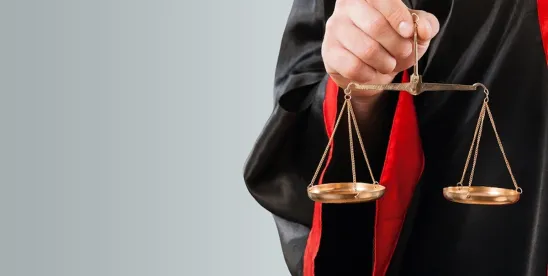Highlights
Long-anticipated U.S. Supreme Court decision in Purdue Pharma shakes up the scope of bankruptcy releases
Insurers get increased ability to participate in bankruptcy cases
Overpayment of bankruptcy fees is not refundable to Chapter 11 debtors
The U.S. Supreme Court’s recently concluded 2023-2024 term included three decisions interpreting various aspects of the U.S. Bankruptcy Code, including the much-anticipated decision in Harrington v. Purdue Pharma, L.P., which is likely to shape the scope of Chapter 11 plans of reorganization significantly. A summary of each of these decisions, and their likely effect going forward, is below.
Harrington v. Purdue Pharma, L.P.
In its most significant bankruptcy decision of the term, the Supreme Court held in Purdue Pharma that non-consensual releases by claimants of non-debtor entities in a bankruptcy plan are not permitted. The Purdue Pharma plan provided that a range of non-debtor parties – including creditors – released certain current and future claims against the Sackler family (the long-time owners of the company) in exchange for several billion dollars in contributions by the Sacklers to the bankruptcy estate. The Sacklers themselves did not file for bankruptcy. The releases were granted regardless of whether the creditor in question consented to them.
Several dissenting parties objected, arguing that the Bankruptcy Code does not provide authority for a plan to grant releases to non-debtors like the Sacklers without the claim-holders’ consent. The bankruptcy court nonetheless approved the plan and the releases under section 1123(b)(6) of the Bankruptcy Code, which allows a plan to contain “any…appropriate provision not inconsistent” with the other terms of the Code. Lower courts had split on approving the releases, with the Second Circuit ultimately concluding that the releases were permissible.
The Supreme Court reversed in a sharply divided 5-4 decision and held that the plan releases were not authorized by the Bankruptcy Code. The court concluded that Section 1123(b)(6) did not extend to authorizing the non-consensual releases by third parties against non-debtors. The court found instead that the common thread of Section 1123(b) was that it permitted the modification of claims either held by or asserted against a debtor, and that (b)(6) did not expand that to include affecting claims by non-debtors against other non-debtors.
The court pointedly noted that it did not purport to address circumstances where consensual third-party releases for non-debtors are provided for in a plan. It also distinguished asbestos-only bankruptcy cases, which are governed by specific provisions in Section 524(g) of the Bankruptcy Code that expressly permit non-consensual releases of claims by creditors against non-debtors in certain circumstances and where certain preconditions are satisfied. (The court in fact noted that the presence of those provisions in 524(g) suggests that Congress meant to permit non-debtor, non-consensual releases only in the asbestos context.) The court further noted that it was not necessarily upsetting plans in other cases that were already approved and had contained the now-disfavored releases.
The opinion generated a lengthy and emphatic dissent. The dissent concluded that the goal of Section 1123(b) was not to provide only for the modification of claims held by or against a debtor, but instead to preserve the debtor’s estate and ensure fair and equitable treatment of all creditors. Under that reasoning, the releases in the Purdue Pharma plan passed muster because the releases were narrowly tailored to cover only claims against the Sacklers that were essentially identical to the creditors’ claims against Purdue itself, and that the Sacklers’ contributions to the Purdue bankruptcy estate would significantly increase creditors’ recoveries. In contrast, tort claimants would likely receive nothing under a plan that did not include the Sacklers’ contribution and accompanying releases.
The dissent also relied heavily on practical considerations in arguing that the releases could be granted. It observed that many Chapter 11 plans containing such releases had been approved in the past in non-asbestos mass tort cases. The dissent concluded based on those examples and others that bankruptcy is a necessary venue for fashioning and implementing solutions to mass tort liabilities, and that non-consensual third-party releases are an essential tool to resolving collective-action problems that may prevent the reorganization of debtors and compensation of victims in mass-tort cases.
The Purdue Pharma decision changes how non-asbestos mass tort liabilities can be addressed in bankruptcy. Third parties’ ability to obtain non-consensual releases from claims is now significantly limited, with those parties now likely having to file for bankruptcy themselves to obtain such relief.
Expansion of the Bankruptcy Code to cover non-consensual third-party releases will now have to come from Congress through revisions to the Code. Increased litigation over what constitutes “consent” to a release is also likely, as debtors and dissenting creditors attempt to discern the criteria that make a release permissible under the limits imposed by the Purdue Pharma decision.
Truck Insurance Exchange v. Kaiser Gypsum Co.
In another significant decision affecting mass tort – and potentially other – Chapter 11 cases, the Supreme Court ruled unanimously that insurers have standing as parties-in-interest to object to various matters in Chapter 11 cases. This includes objecting to confirmation of a Chapter 11 plan on the grounds that it might affect the insurer’s interests.
Prior to the Kaiser Gypsum decision, several circuit courts of appeals held that insurers did not have standing to object to many aspects of plan confirmation where Chapter 11 plans contained language providing that a plan would not impair an insurer’s rights under its policies or affect the amount or nature of the insurers’ liability. Those rulings effectively preempted many objections that an insurer might raise, or seek to raise, to a Chapter 11 plan for its insured.
The court rejected the argument that insurance neutrality language could proactively address insurers’ concerns about a Chapter 11 plan, finding that Chapter 11 plans could potentially affect insurers’ rights in numerous ways. Instead, the court ruled that an insurer with financial responsibility for a claim against a Chapter 11 debtor is a “party in interest” with standing to object to confirmation of the Chapter 11 plan.
The Kaiser Gypsum ruling will have a substantial impact on Chapter 11 reorganizations in which a debtor’s insurance assets make up a significant portion of creditors’ expected recoveries. In those cases, debtors will likely want to engage with insurers to address potential objections early in much the same manner as they would engage with significant creditors’ constituencies. Insurers are also likely to demand greater involvement in the conduct and negotiation of reorganizations and the development of Chapter 11 plans as a result of the ruling.
Case law following Kaiser Gypsum will doubtless flesh out the extent to which insurers have a pecuniary interest in all or part of Chapter 11 plans that supports standing to object to them. For now, however, the increased level of insurer standing to object to plan confirmation, along with the limits on third-party releases resulting from the Purdue Pharma decision, may make the resolution of large-scale liabilities comparatively more difficult in Chapter 11.
United States Trustee v. John Q. Hammons Fall 2006, LLC
In the final bankruptcy-related decision issued by the Supreme Court this term, the court held that Chapter 11 debtors that paid increased fees to the Office of the United States Trustee that had previously been found unconstitutional were not eligible for a refund. In most states and other U.S. jurisdictions, the U.S. Trustee – an arm of the U.S. Department of Justice – administered certain aspects of the federal bankruptcy system. In two states, however, a Bankruptcy Administrator Program performed those administrative functions. Both the U.S. Trustee and the Bankruptcy Administrator Program were funded by fees paid by debtors. Those fees were identical until 2018, when Congress increased the quarterly fees payable to the U.S. Trustee. The fees payable to the Bankruptcy Administrator Program did not increase at the same time, however, and were not made equal to the increased U.S. Trustee fees until 2021.
The Supreme Court ruled in 2022 that the fee disparity between the U.S. Trustee jurisdictions and the Bankruptcy Administrator Program jurisdictions violated the Constitutional requirement that bankruptcy laws be uniform across the U.S. In Hammons, the Supreme Court addressed whether debtors that paid the increased US Trustee fees were entitled to a refund of the amounts overpaid. Lower courts addressing the issue following the Supreme Court’s 2022 ruling overwhelmingly concluded that a refund was the appropriate remedy, while the U.S. Trustee argued that the prospective parity between the fees charged by the U.S. Trustee and the Bankruptcy Administrator Program was sufficient to address the Constitutional violation.
The Supreme Court agreed with the U.S. Trustee in a 6-3 decision. The court concluded that the Constitutional violation was small and short-lived and was cured by the elimination of the fee disparity in 2021. The court also found that ordering refunds presented significant practical challenges given that many of the debtors entitled to refunds had ceased to exist and that Congress did not appear to contemplate refunds when it remedied the fee disparity. For its part, the dissent found that the failure to refund the improperly imposed funds effectively left the debtors with no remedy while “permitting the government to keep the cash it extracted from its unconstitutional fee scheme.”
Hammons is likely to have minimal influence on future bankruptcy cases because the underlying issue – the fee disparity – was previously cured by Congress.




 />i
/>i
